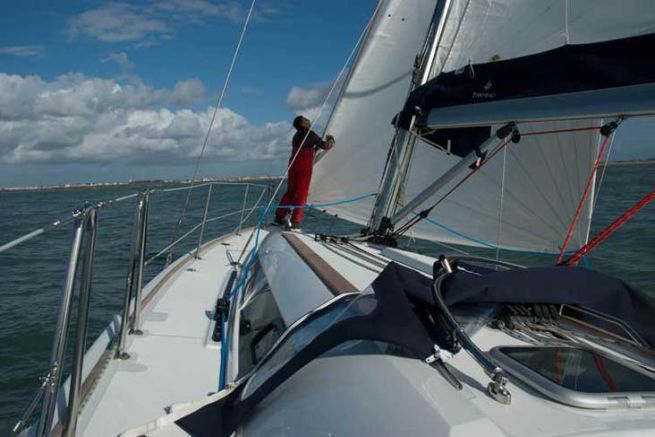We saw in a previous post that it was possible to get a good start on a cruise with only two or three sails on board. The mainsail and genoa allow you to tack safely and are essential sails to start with. A certain number of adjustments make it possible to optimise these sails for more performance, comfort and safety.
Adjusting the surface area of your sails in relation to the wind force
A boat moves forward due to the force of the wind, but it changes and therefore the sail area of the boat must be adjusted to the average wind and gusts. There is no chart (calculation) that recommends which sail area to set for each wind force. In practice, it depends on your sails, your boat, the sea state and the crew. It is therefore necessary to use your sea sense and your bearings.
For example, if the boat heels too much, the sail power must be reduced. Conversely, if the boat does not move forward in spite of the wind, there is probably a sail trim to be optimised.
These adjustments can be made using the sail sheeting, but sometimes you have to reduce the sail area. This involves modifying the windward surface area of both your sails.
For the mainsail, it's drisse?!
The mainsail is the most versatile and most frequently used sail. On a mainsail, there are between one and three reefs. The first configuration is not sufficient in terms of safety, so you will need to call on your sailboat to install at least a second one. The last configuration is the safest. Also check the reliability and efficiency of your reefing gear for safe manoeuvring.
Reefing is the process of reducing the surface area of a sail by partially folding it in. You should therefore not hesitate to do this before the wind has become too strong and before moving around on deck becomes tricky. Generally, reefing is done upwind, supported by the genoa, in order to remain manoeuvrable.
Conversely, it is easier to release a reef when the wind is not strong enough. So, don't hesitate to multiply the tests, in port and at sea, to familiarise yourself with this manoeuvre.
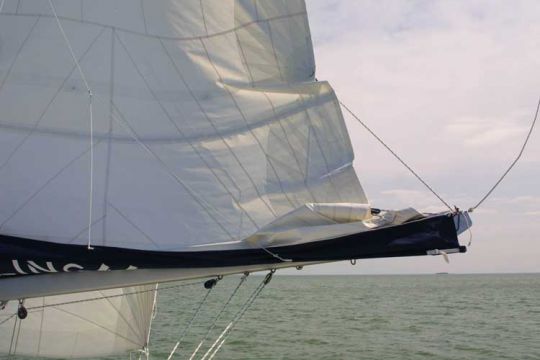
For the genoa, it's enrouleur?!
The genoa is a headsail with a large overlap mounted on a furling system. Its size can therefore be adjusted according to the wind strength. Thanks to the furling system, there is no need to go forward to change sails. The sail wraps around the forestay to adjust the sail area. It is an incomparable comfort of use. Although upwind performance is rarely satisfactory, the furling genoa is convincing at all other points of sail.
To roll up your genoa easily, you have to cut it down to the mainsail. This way, the sail will not furl violently due to the moderate pressure. You will then be able to furl it with little effort. For a tight furling, you will still need to take care to keep a minimum of tension in the sheet.
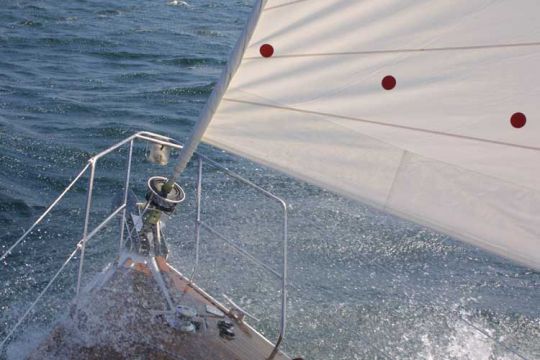
Adjust the shape of your sails in relation to the strength of the wind
To adapt to the wind force, the shape of the sail, and therefore its power, can be easily modified. For this, some tools are at our disposal:
- Digging the sails in light airs to give power
- Flatten them as the wind picks up.
For mainsail, halyard and trim
The trim is the part of the sail that is along the boom. It gives volume to the sail by releasing or absorbing it by pulling backwards.
The halyard isn't just for hoisting the mainsail. It is used to move the mainsail forward or backward. Indeed, when the wind increases, the hollow of the sail moves backwards and the tension of the halyard allows the hollow of the mast to be brought closer to the mast to avoid being overpowered.
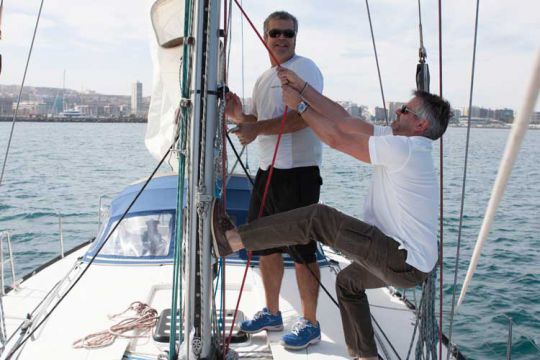
For genoa, halyard and clew
The clew is often adjustable and installed on the clew rail, which is found on either side of the roof. Most boats are equipped with one. As with a mainsail edging, moving the clew backwards flattens the sail and moving it forwards digs it out.
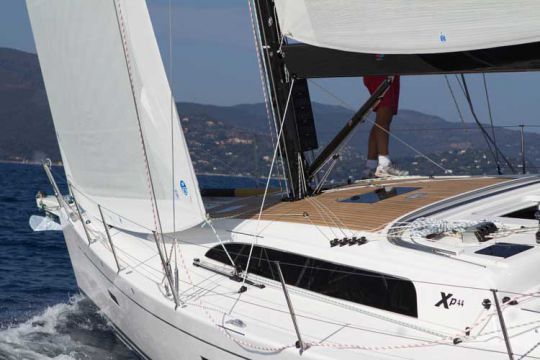
In both cases, beware of old sails that are deformed and have become too hollow, on which erasing the volume and reducing the power is impossible. You will have to invest in a new sail.

